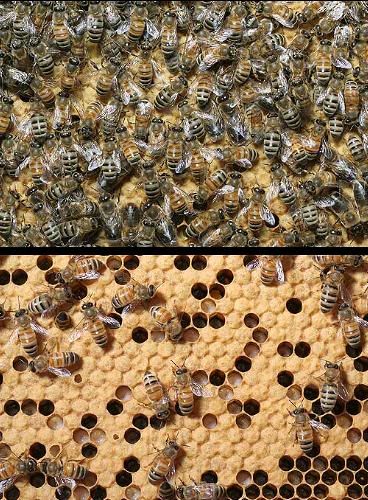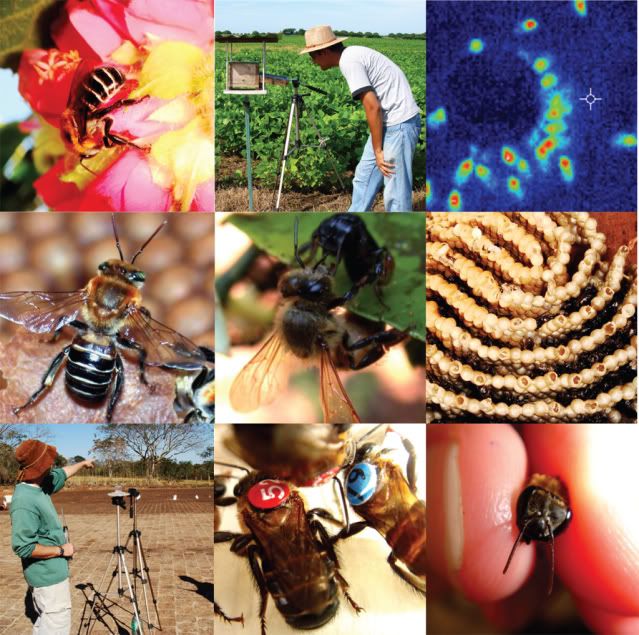by Wee Mama
Fri Apr 17, 2009 at 11:23:35 AM PDT
News in recent years about Colony Collapse Disorder of bees raised concerns here over the past two years, reflected in part in Devilstower's diary. Good news! It appears that the cause has been identified, which is the first step to managing or avoiding the disease. A report today in Ars technica summarized research from Environmental Microbiology Reports. Spanish researchers found a parasitic fungus, Nosema ceranae, in two infected hives after eliminating other possible causes. More significantly, they were able to treat other hives with an antifungal, fumagillin, and completely cure the colonies.

Healthy on top, sick colony below
[More over the fold]
- Wee Mama's diary :: ::
Here's the abstract (permitted by fair use, I believe):
Honeybee colony collapse is a sanitary and ecological worldwide problem. The features of this syndrome are an unexplained disappearance of adult bees, a lack of brood attention, reduced colony strength, and heavy winter mortality without any previous evident pathological disturbances. To date there has not been a consensus about its origins. This report describes the clinical features of two professional bee-keepers affecting by this syndrome. Anamnesis, clinical examination and analyses support that the depopulation in both cases was due to the infection by Nosema ceranae (Microsporidia), an emerging pathogen of Apis mellifera. No other significant pathogens or pesticides (neonicotinoids) were detected and the bees had not been foraging in corn or sunflower crops. The treatment with fumagillin avoided the loss of surviving weak colonies. This is the first case report of honeybee colony collapse due to N. ceranae in professional apiaries in field conditions reported worldwide.
Obviously treating every colony in the world with fumagillin would not be a good idea - too expensive, and certain to lead to resistance. But knowing the cause makes it much more likely that good practices can reduce the incidence, and the fumagillin makes a good back up if hygiene fails.
Thought you all would enjoy getting some good news on this lovely spring day! (Lovely here at least - hope most of you are also enjoying some true spring).
And some eye candy from UCSD:

(UPDATE)
Since this is getting visibility, here are some more resources:
Russians have developed strains resistant to varroa mites, another baddy

